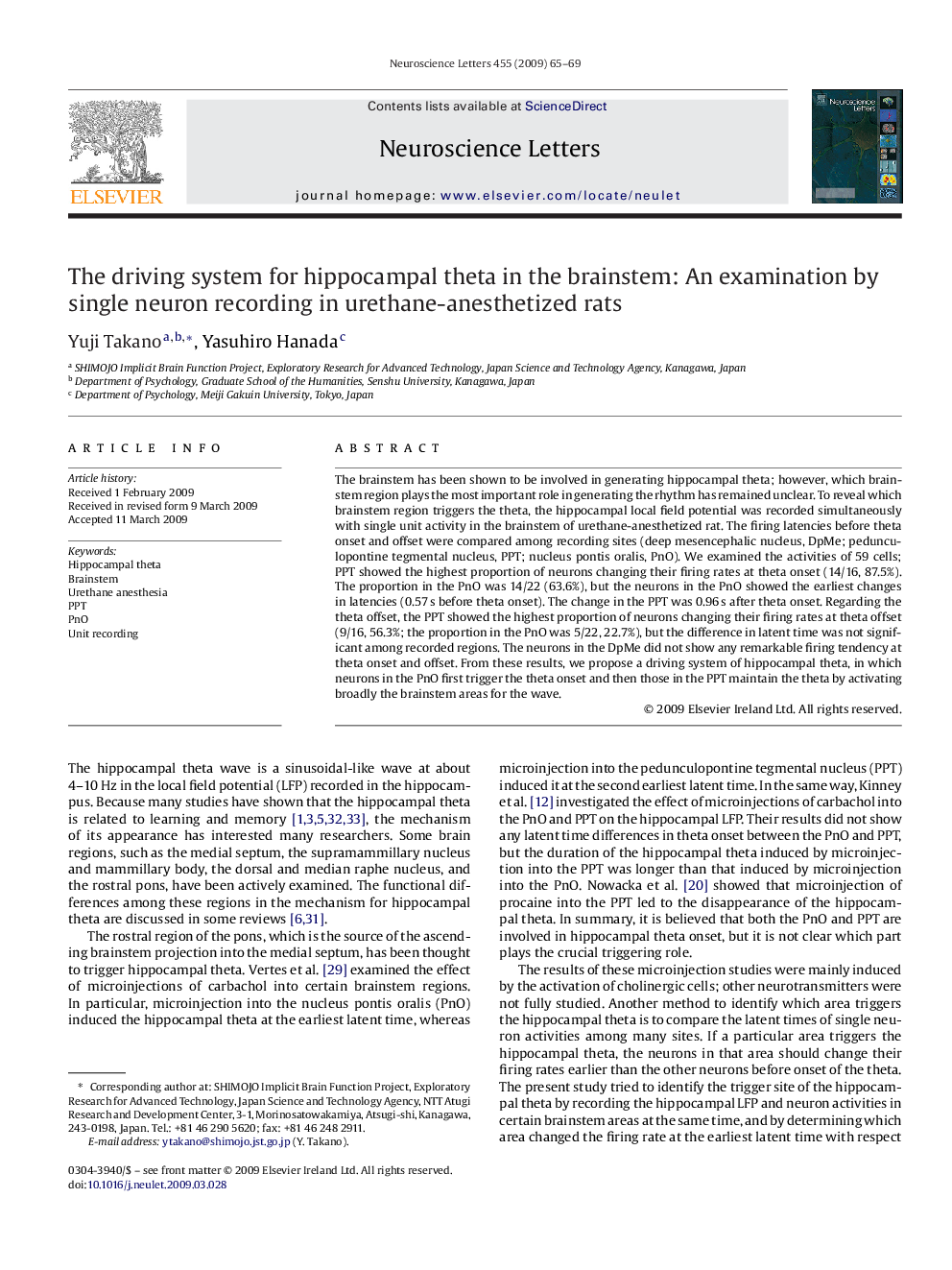| Article ID | Journal | Published Year | Pages | File Type |
|---|---|---|---|---|
| 4347274 | Neuroscience Letters | 2009 | 5 Pages |
Abstract
The brainstem has been shown to be involved in generating hippocampal theta; however, which brainstem region plays the most important role in generating the rhythm has remained unclear. To reveal which brainstem region triggers the theta, the hippocampal local field potential was recorded simultaneously with single unit activity in the brainstem of urethane-anesthetized rat. The firing latencies before theta onset and offset were compared among recording sites (deep mesencephalic nucleus, DpMe; pedunculopontine tegmental nucleus, PPT; nucleus pontis oralis, PnO). We examined the activities of 59 cells; PPT showed the highest proportion of neurons changing their firing rates at theta onset (14/16, 87.5%). The proportion in the PnO was 14/22 (63.6%), but the neurons in the PnO showed the earliest changes in latencies (0.57Â s before theta onset). The change in the PPT was 0.96Â s after theta onset. Regarding the theta offset, the PPT showed the highest proportion of neurons changing their firing rates at theta offset (9/16, 56.3%; the proportion in the PnO was 5/22, 22.7%), but the difference in latent time was not significant among recorded regions. The neurons in the DpMe did not show any remarkable firing tendency at theta onset and offset. From these results, we propose a driving system of hippocampal theta, in which neurons in the PnO first trigger the theta onset and then those in the PPT maintain the theta by activating broadly the brainstem areas for the wave.
Related Topics
Life Sciences
Neuroscience
Neuroscience (General)
Authors
Yuji Takano, Yasuhiro Hanada,
